I visited the MFA about 14 years ago in 2006, and got quite a few photos of their fantastic collection of chopines and historic shoes. I had the excellent fortune to visit again and set up a last-minute appointment to view a few pieces, which I highly recommend you do if you find yourself passing through Boston at any point. I examined six pieces in detail, with myriads of pictures, and although I’m not to publish anything on them, I would love to share my notes on each (as well as record for my own reference!)
Let us start with this little beauty, and I do mean little:
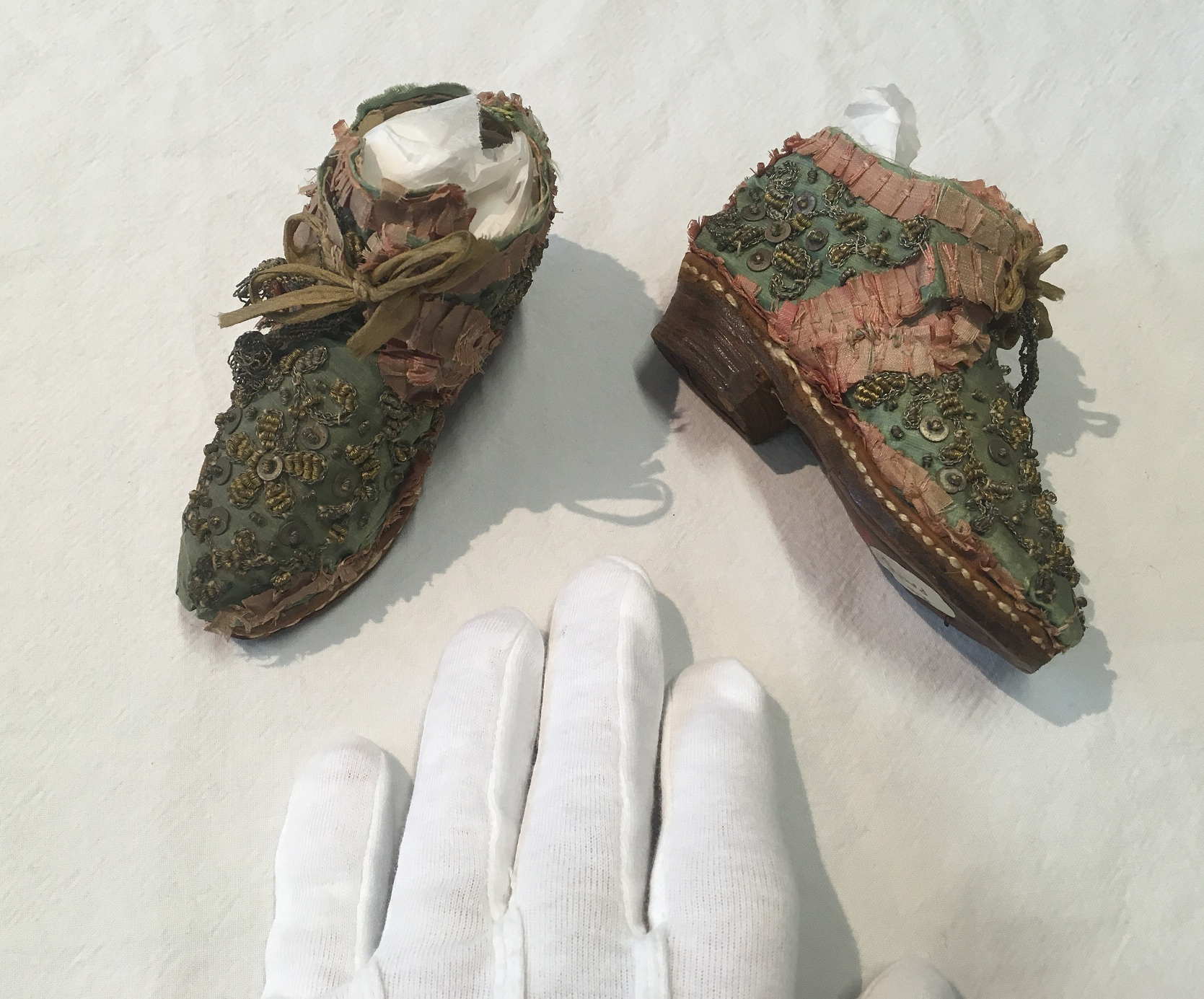
I had to place my hand for reference, since these really are absolutely tiny little gems.
– Less than 5 inches long, no evidence of ever having been worn
– Museum dated to the end of the 16th century (I read it as early 17th century, based on the stacked heel construction and ornamentation)
– Randed construction, outsole stitching at about 8-9spi
– Interior lining is parchment paper with musical notes on it!
– Sole is actually pretty flanky sole leather – makes sense, since these likely never got put on the ground
– Heel is stacked, 7-8 layers of thin leather. The main sole was sewn on up to the heel, and then stitching takes over going through the entire stack.
– No evidence of pegs, save one big hole, likely to keep the stack on the shoe
– 1/4″ margin between outsole stitching and cut edge
This is an old friend that I saw in 2006, and modeled Lesson 3 after.
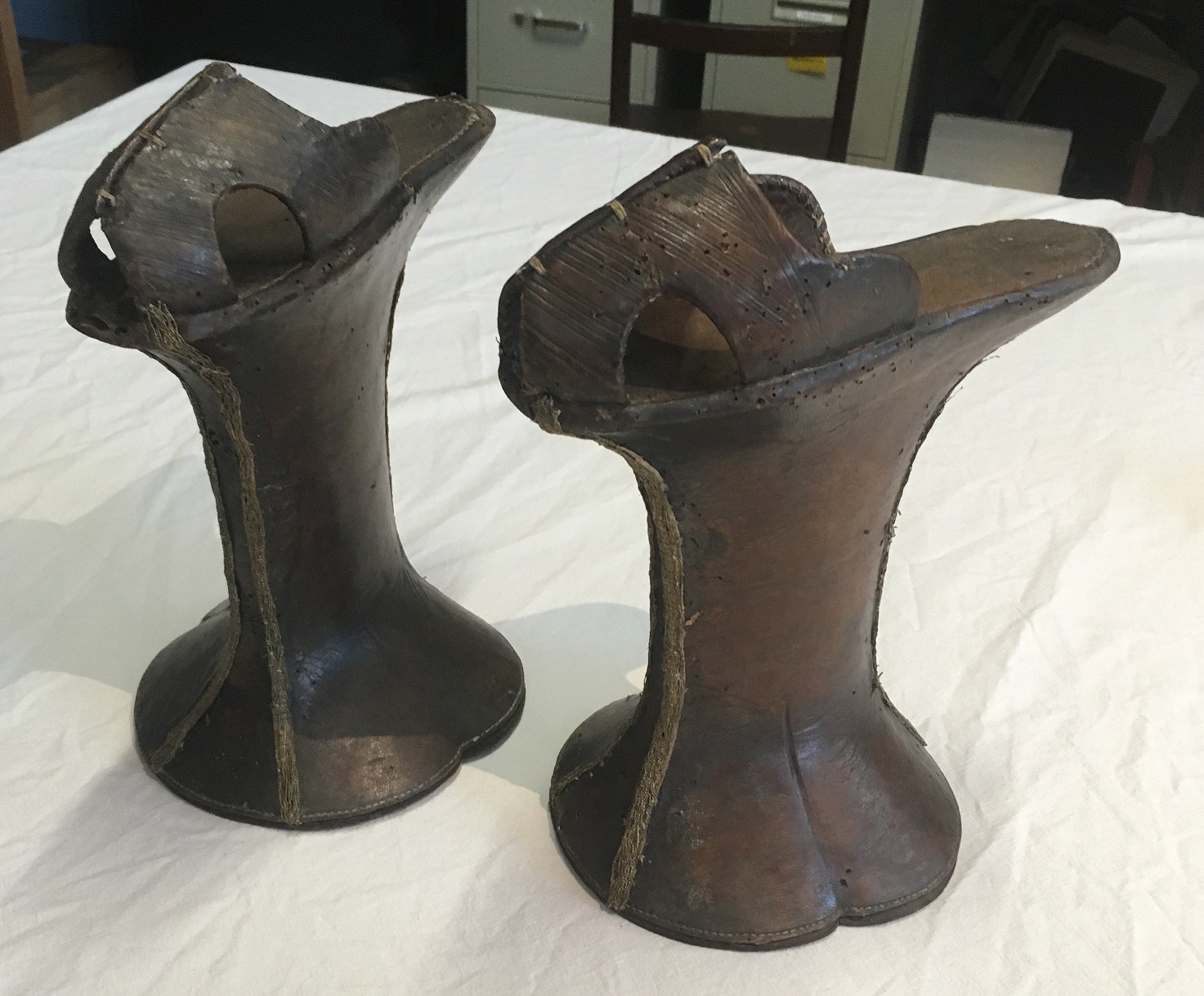
– Museum dated to the late 16th/early 17th, it is timber with a tooled leather vamp, typical chopine (enveloped) construction
– ~1.5 lbs each, very thin and waisted in the center
– Tacking stitches hold metallic braid onto the
– Vamp is split, a sturdy leather interior (grain on the inside) with a thin layer over it whipped to the edge (~5spi)
– Insole stitching is fairly coarse, at about 4-5spi
– Outsole is actually double layer of leather
– Definite evidence of wear
– Outsole stitching is 2mm above the join of the surround leather to the outsole, more than I expected, and consistent.
– 8spi for outsole stitching, with stitching inset 3/8″ to 5/16″ from cut edge of outsole
I was glad to get to see this; an actual slap-sole show from the 17th century. I can just picture the “clocking” as you walked – what a way to make an entrance.
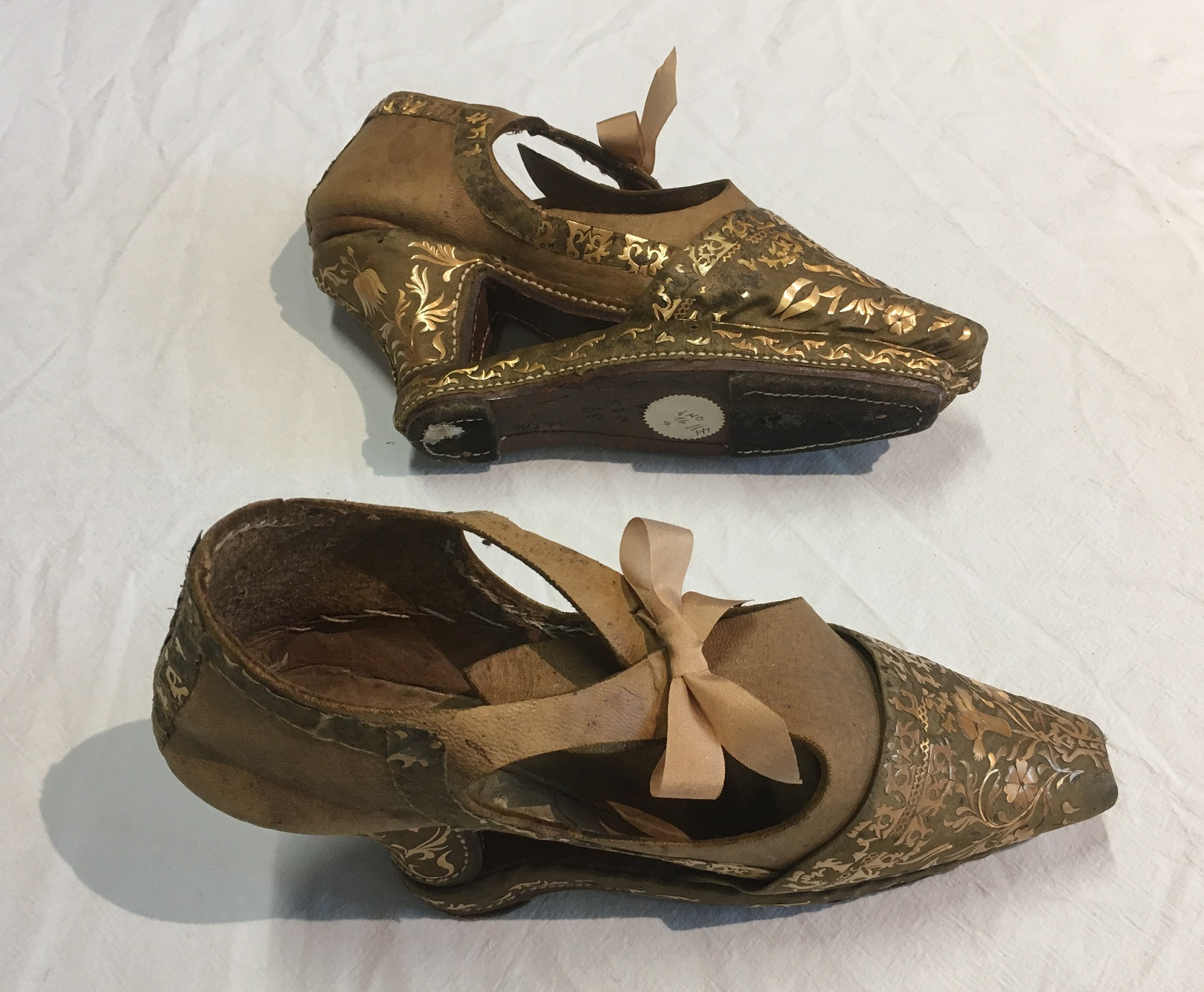
– Museum dated to about 1670, it is leatherk, silk satin, and brushed straw!! applique. It looks like hammered gold to me!
– The patten is actually part of the shoe, not a separate piece
– Very minor wear
– Distance from rand to sole about 2mm
– 1/4″ to 3/8″ margin between outsole stitching and cut edge
– Second leather pad, flesh side out, stitched without a groove
– Leather portion appears to be sturdy goat/sheep, with a silk satin for the textiles
– Appears to be Quarters were not fully lasted at the heel, just as in the Ashmolean heels and in the white alum tawed examples from this same museum
– Evidence of paper in the seams, which was common in order to protect the shoe itself (it was torn out afterwards)
– “Fake” rand for the shoe= at the back for consistency
– Knots at the top of the closing stitches, again like the Ashmolean heels
– Short side linings only, not in the heel, which are coarsely whipped in
– Reinforcement cord around bottom of the cutouts consisting of thick thread whipped about 1/8″ from cut edge, no binding
– Reinforcement cord along heel quarters as well for a brief amount
This is a puzzling pair of shoes. It reads a great deal later than its museum dating of early 18th century, especially the tiny little toe. The thin brown leather (flesh out) is cut and punched to show the alum-tawed leather underneath (also flesh out).
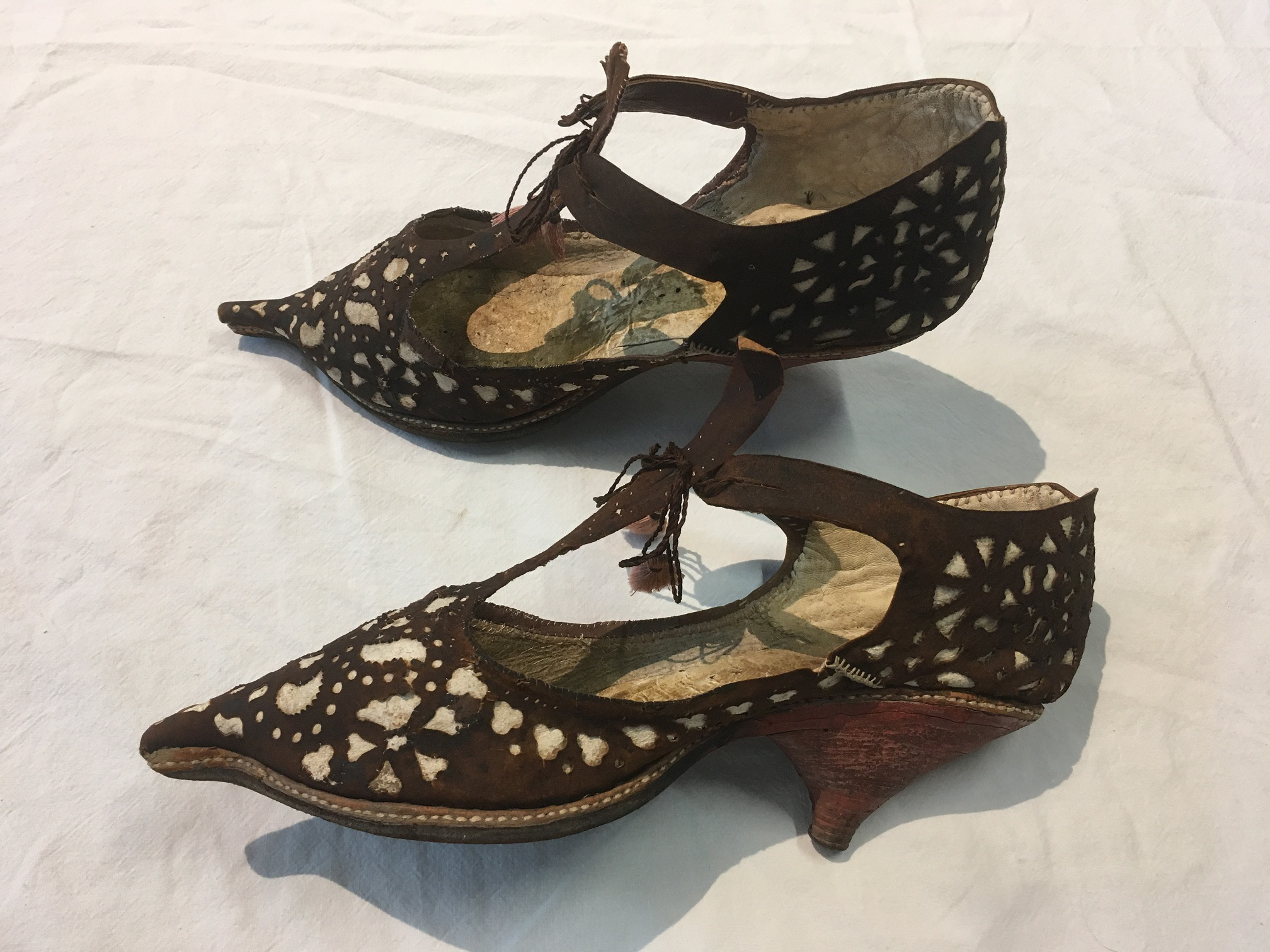
– Turn-rand construction, but there is a clear score in the rand, not the cut edge
– Definitely used and well worn
– Unclear how original outer layer was applied (likely paste, and worked as one) but much evidence of conservation stitching
– Insole has a alum taped sock which appears to be stitched in with the actual insole
A very unusual pair of Men’s strapped shoes made from silk damask lined with linen and with a thin alum tawed goat interlayer.
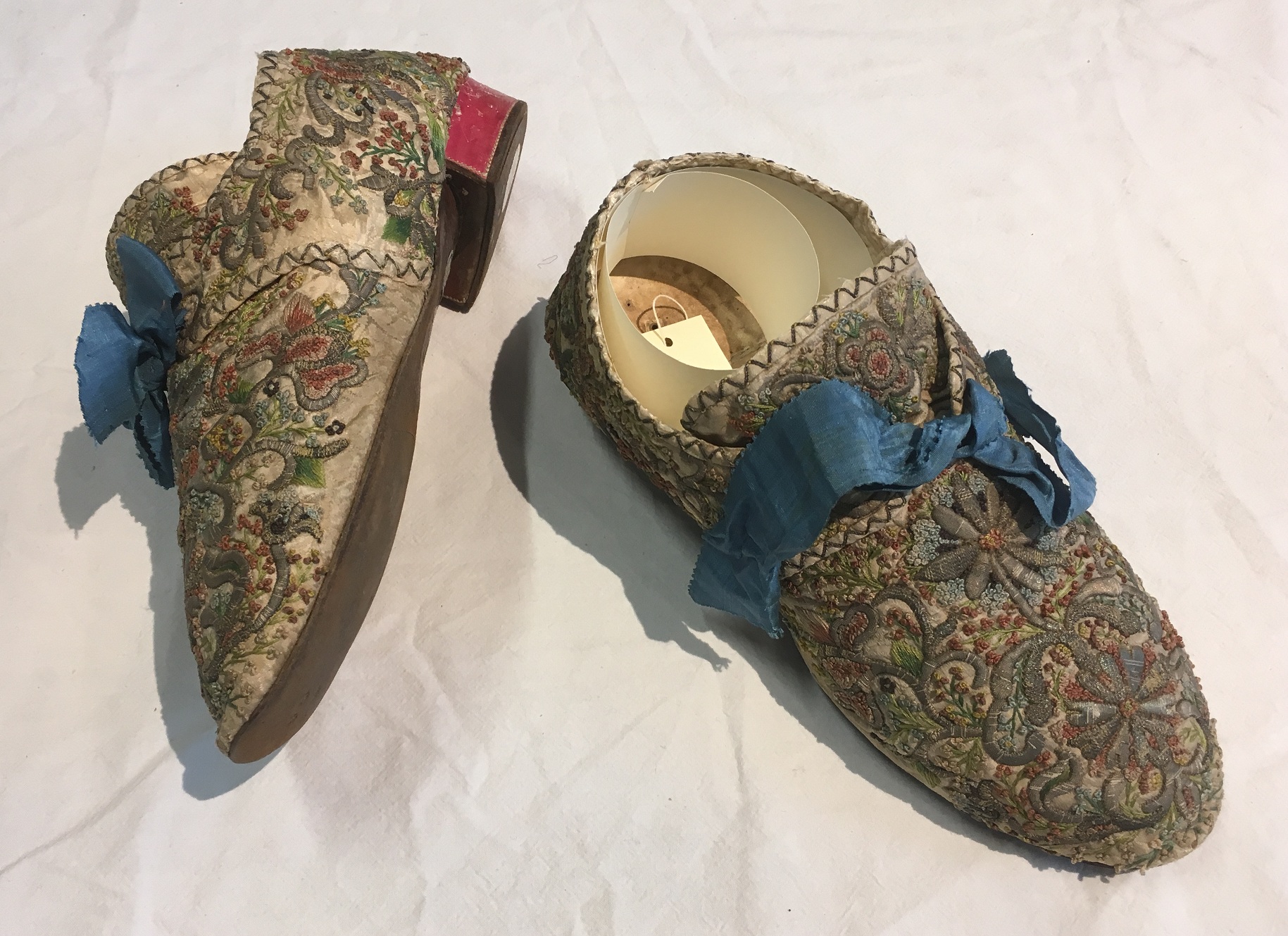
– Definitely used – only ~1mm heel leather remaining, many scuffs and so on the leather heel
– Turn-shoe construction, with an added leather insock stitched down at the heel on all sides (likely only pasted in the front, some turnshoe stitching still visible)
– Red heel was starting to come out of fashion by the end of the 18th (museum dated to 1770-85), so I suspect an earlier piece
– Fine heel stitching at 14-15 spi
– A layer of split-stitch at the top of the heel which passes through the upper and into the insock, 12-13 spi
– Heel top piece is additionally pegged and stitched on outer edges (not the highly curved interior)
– Significantly scooped, consistent with construction of the time
A pair of “ecclesiastical shoes” dated by the museum to the 18th century.
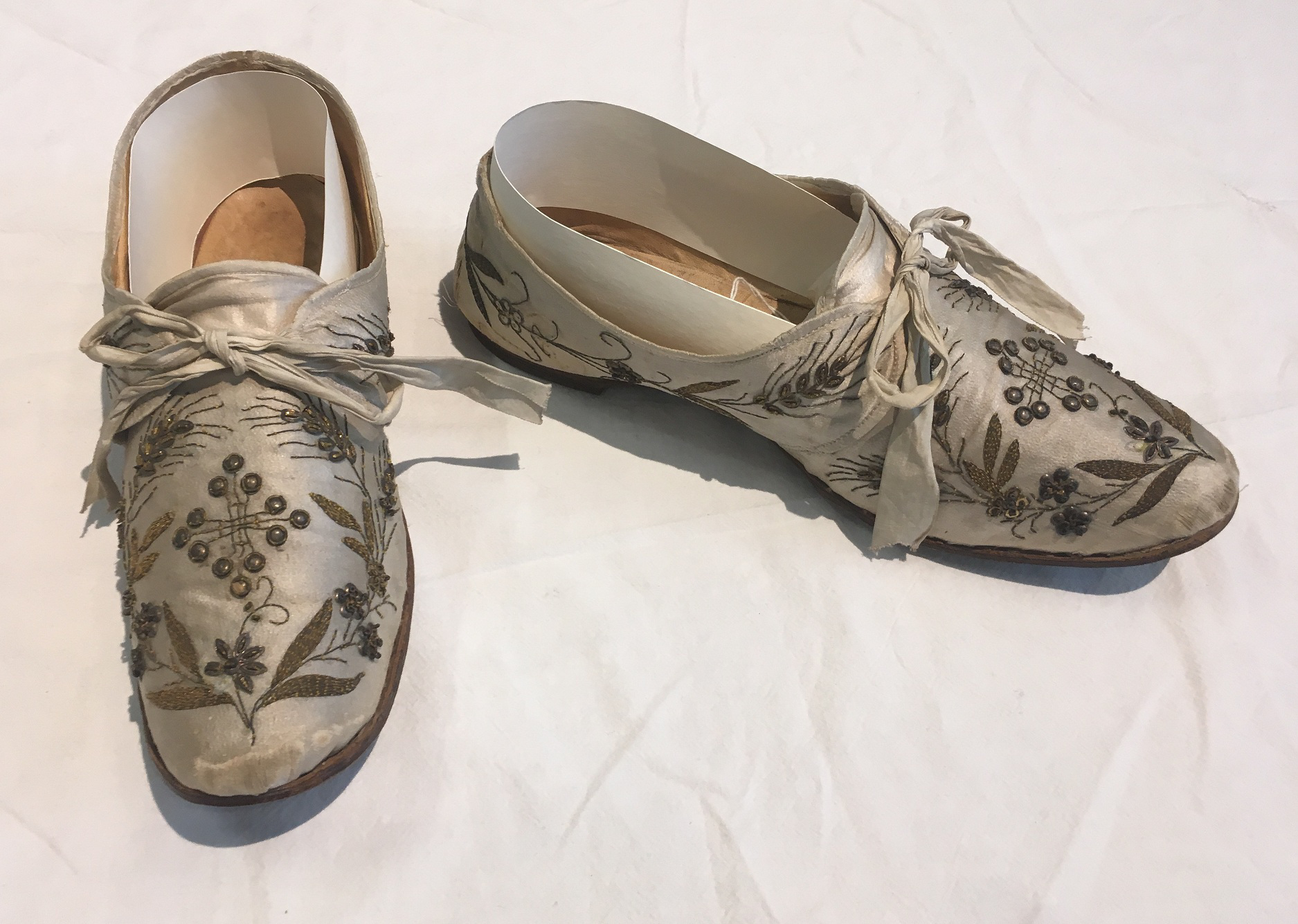
– Definitely used – very thin leather at front
– Appears to be turn-welt construction
– Silk satin with leather lining (grain side in), with white silk binding
– Stitching on seams from the outside, but does not appear on the inside
– Appears to be interlined with linen or canvas
– Heel is stacked with 3 very thin layers and stitched
– Toe is reinforced (makes sense)
And now for a bonus pair – a pair of painted alum tawed 18th century shoes. These are really sweet, and I very much admire the look! Like nothing I’ve ever seen before.
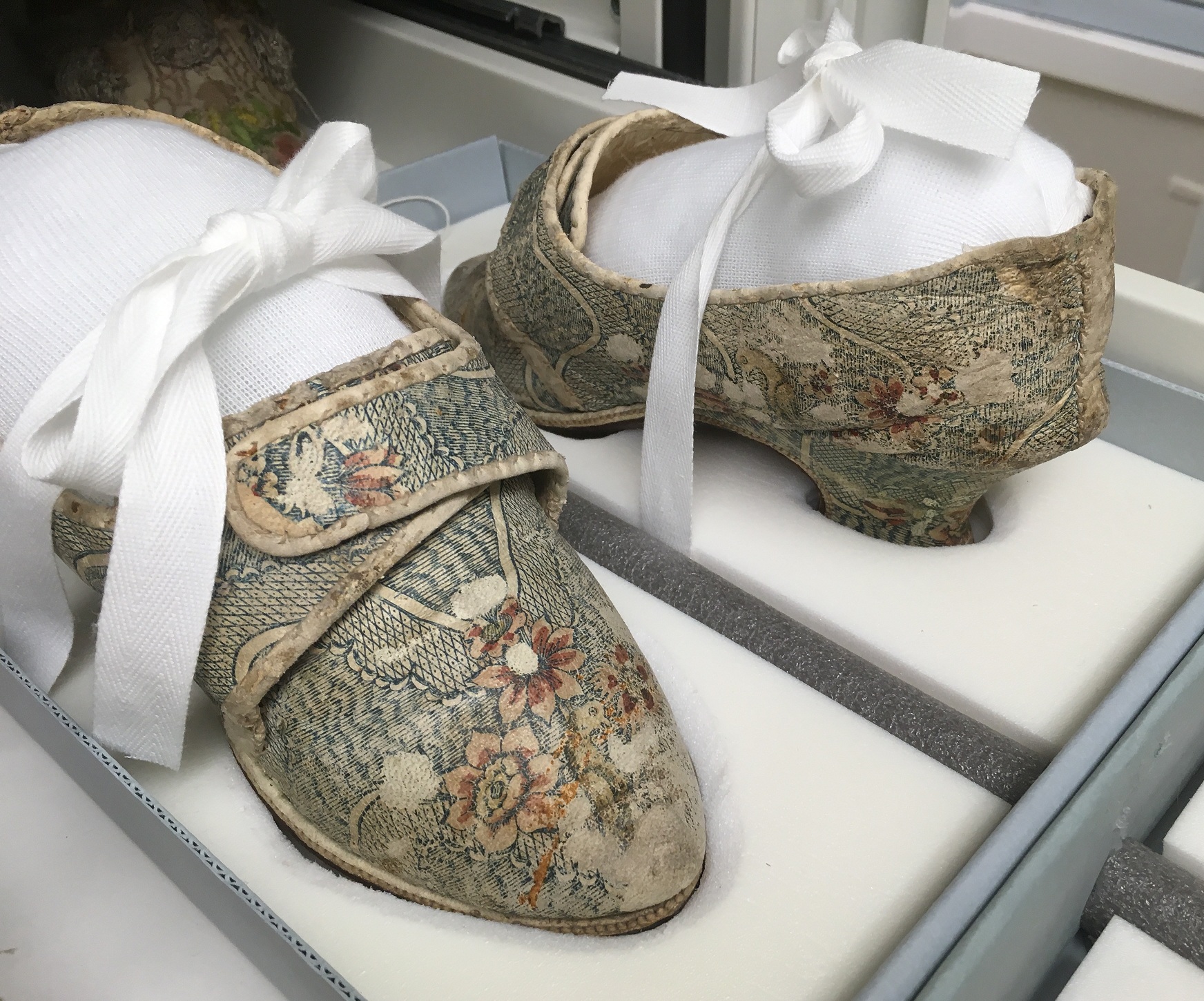
– Fine turn-randed construction
– Bound on the upper with leather binding
– Almost certainly painted before the shoes were made up
– Reads about 1750s based on the heel shape and height